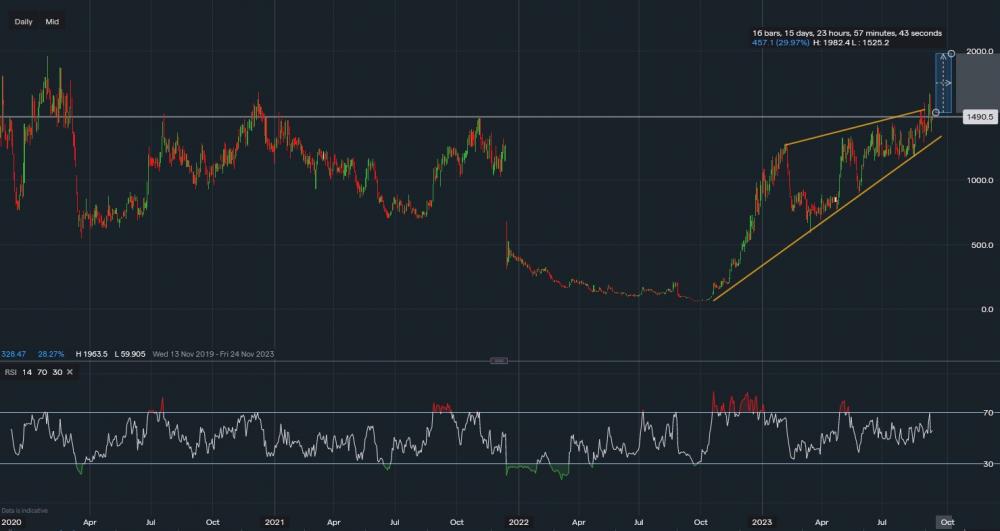Test- FTSE 100 Kicks Off August on a High as BP and Senior Lead Market Momentum
$11
10 Oct 2025, 13:13

Image data - IG

Cabaletta Bio Inc is a US-based bio-pharma company specialising in T-cell products in the anticipation of dealing with autoimmune diseases. The firm currently employs 78 people and has a market share of roughly $600m.
The stock is up 61% YTD with a prosperous outlook and up over 1,600% over the last year. Despite what seems to be a great yearly return, the company did go public at around $10 per share in 2019 and over the pandemic period fell to a low of $0.60c per share – A good example of a stock that boomed and busted to then return back and move higher.
Looking over the financials, like many biotech companies, Cabaletta is operating at a loss. In the most recent quarter, the company lost $14.4m which was higher than the same quarter in 2022. Balance sheets are generally more important with companies such as this and Cabaletta is no exception. Taking a look at the balance sheet, total cash reserves sit a $176m with total assets at $184m. Like most businesses in this industry, liabilities remain very low at just $10.5m giving the company net positive asses of $174m. Taking this into consideration Cabaletta is losing $50-$60m per year therefore it’s important that their R&D development pays off regularly which it is for now.
Looking at the financial chart the stock actually looks quite positive with an ascending triangle pattern forming. Support for the shares sits at around $13.50 with a break below here targeting the summer lows of $11.50-$11.70. Towards the upside, tough resistance sits at the $16.64 spike from this week with a break above here then targeting $19.63 all-time highs seen in December 2020. Taking this into consideration, the upside potential for Cabaletta is around 30% in our opinion. According to tip ranks, 3 analysts have a buy rating reiterated with an average price target of $24 equating to a 60% return.
Overall Cabaletta could turn out to be a strong stock for the more ‘risk on’ investors however, given the range the stock has traded of over 96% between the highs and lows its risk is quite high.